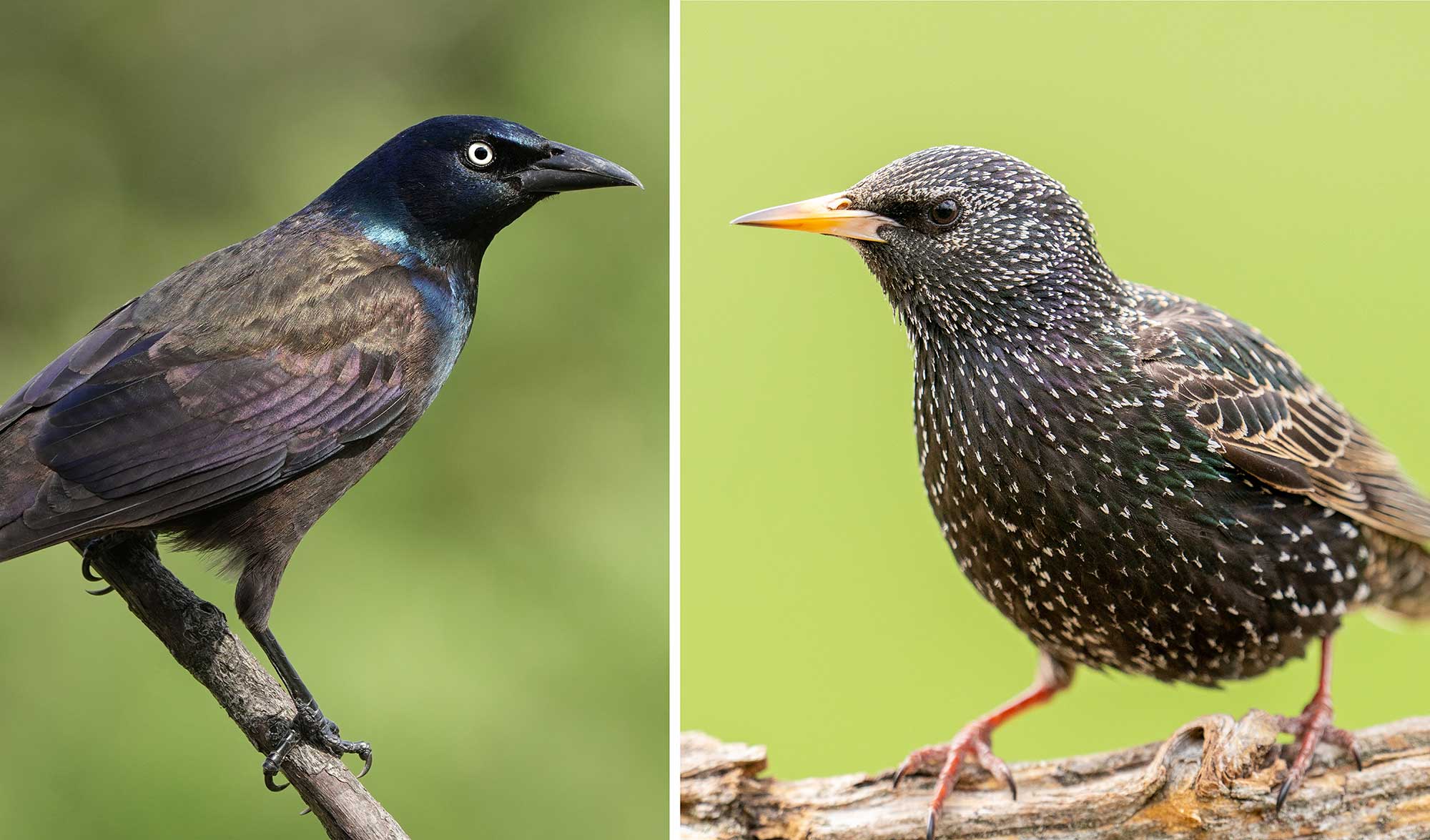What's the difference?: Grackle vs. starling

Just like not all blue birds are bluebirds, not all the black birds we see are blackbirds. And some of the black birds we see can be confused for one another. Crows and ravens are often mistakenly identified as one another, and another similar-looking duo that can look similar to those who aren't avian experts are common grackles and European starlings.
Adding to the confusion between the two species is that starlings and grackles often flock together, and they are often seen with another common black bird, the red-winged blackbird, according to Birds & Blooms. Luckily, male red-winged blackbirds are easy to pick out of the crowd because of their brightly colored red and yellow wing patches. And female red-winged blackbirds aren't black at all, so there's no cause for confusion there. Here's your chance to learn the difference between common grackles, which are a species of blackbird, and European starlings, which, along with other starling species and mynas, belong to the Sturnidae family of birds.
For starters, common grackles are the larger of the two species, according to the Cornell Lab or Ornithology. In a mixed flock of birds, the grackles will be noticeably larger than the starlings. Grackles measure between 11 inches to 13 inches long, while starlings are typically between 7 inches and 9 inches long.
While both birds are predominantly black, you can tell which bird is which by getting a good look at their plumage. Both birds have iridescent feathers, but while starlings appear iridescent all over, grackles have shiny glossy heads that look almost purple in the light, the Cornell Lab reports. If you can get a close look, the coloring of its bill and legs can be useful for identification. Grackles have dark-colored bills and legs, while starlings have yellow bills and orangish legs.
The female and male birds look similar for both grackles and starlings, but female grackles are typically not as shiny or glossy as their male counterparts. In the winter, starlings have white spots on their feathers, giving them a polka-dotted appearance that make them easier to distinguish from other, similar-looking birds.
Both common grackles and European starlings are well adapted to living alongside humans, which contributes to the confusion between the two species. They are often seen together in the same spaces, so people can confuse them for one another or lump them together. Starlings are more closely associated with human landscapes, requiring grassy areas to forage for food and trees, houses and buildings with cavities for nesting, according to the Cornell Lab. Grackles are more partial to open woodlands but also inhabit grasslands, forest edges, agricultural areas and urban and suburban neighborhoods.
When we see these birds together, it is often as they forage for food on the ground. Grackles are primarily seed eaters and will look for spilled bird seed and agricultural grains to feast on. Starlings typically focus on insects and invertebrates when they are readily available. When they are not, they also eat fruits, grains, seed, nectar and even garbage, the Cornell Lab reports. Grackles are not strictly herbivores, either. In the summer, they will eat insects, crustaceans, fish, mice and other small animals.
One of the primary differences between these two similar-looking species is that only one of them is native to North America, and their common names are a big clue to which one of the two it is. Common grackles are native to North America and are found east of the Rocky Mountains, but European starlings were introduced here in the late 1800s when 60 of the birds were brought to the United States and released in New York's Central Park by a Shakespeare fan who wanted to introduce all the birds referenced in Shakespeare's plays to the United States, Treehugger reports. Starlings do not have a large presence in Shakespeare's works, but they are mentioned briefly in "Henry IV."
Since being introduced in Central Park, European starlings have flourished in the United States and live across the entire country. They are one of the most populous birds in the United States, although their population has been declining since the mid-20th century, the Cornell Lab reports. Because their population is so high, there is concern that they might outcompete some native bird species because starlings tend to take over the nests of other birds. A study determined that most bird populations seem not to have been affected by the starlings' aggressive behavior. Only sapsuckers have seen their population decline because of the starlings.
